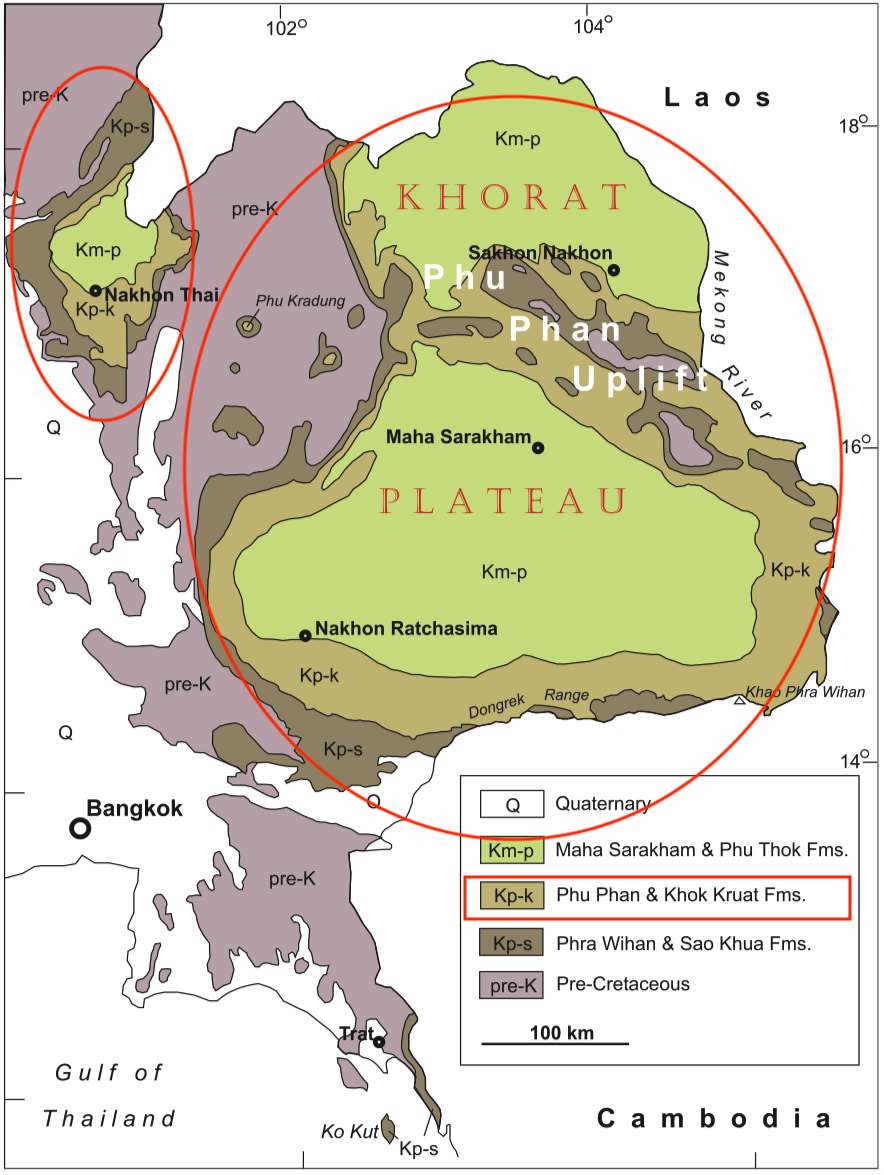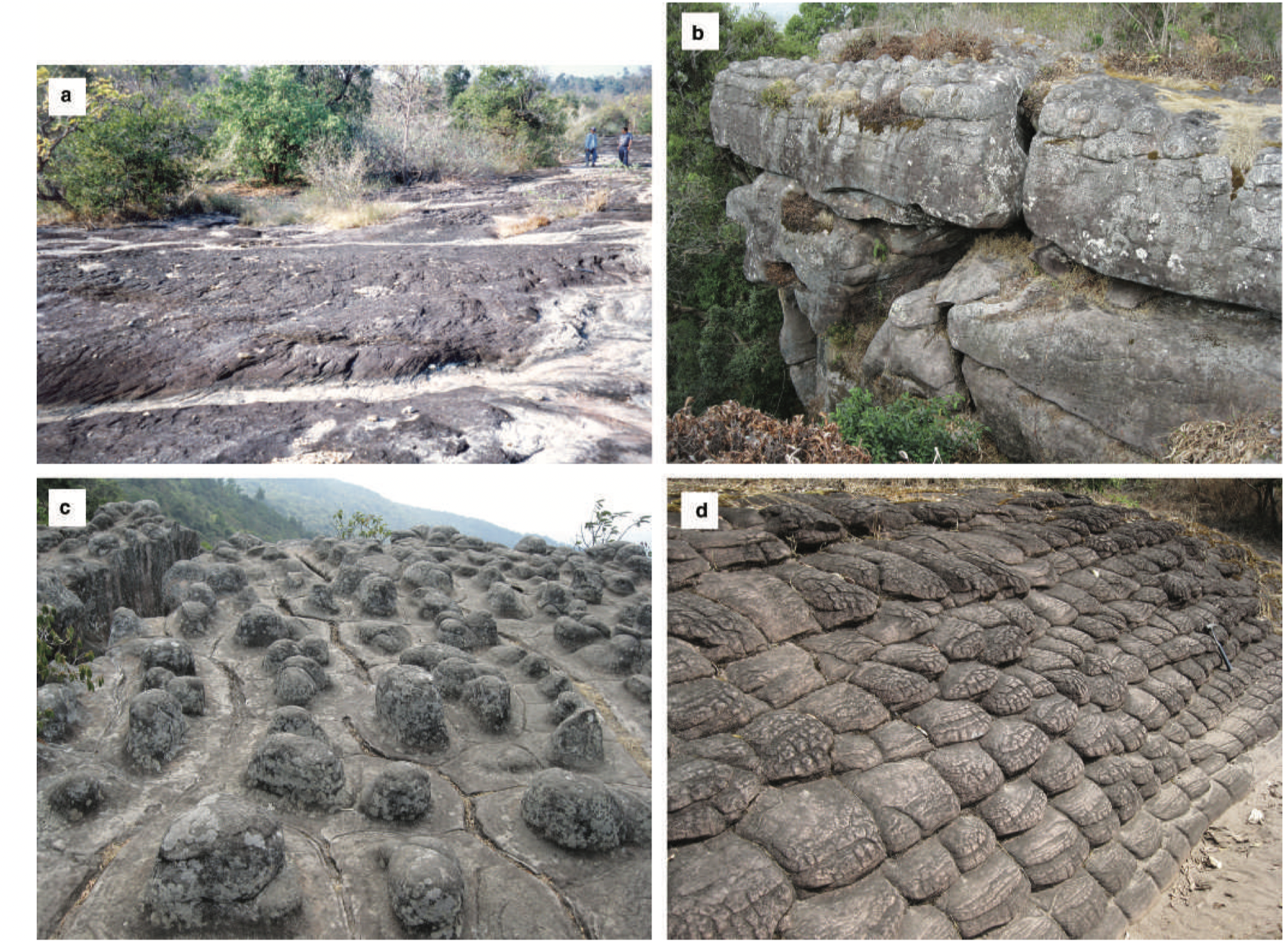Phu Phan Fm
Type Locality and Naming
Synonym: หมวดหินภูพาน
[Figure: NE and SE Thailand, showing distribution of Cretaceous outcrops. (Meesook, 2011. Page 170). At least some of the Pre-Cretaceous sedimentary rocks on the map may be Jurassic and the position of the Jurassic-Cretaceous boundary is discussed in Meesook (2011).]
Lithology and Thickness
Sandstone conglomerates are locally exposed, particularly at the Kaeng Kabao Rapids along the Mae Khong River banks, Mukdahan Province, and at Pha Nam Thip in Roi-et Province.
The Phu Phan Fm sandstone in the south-eastern part of the Khorat Plateau is slightly coarser than elsewhere in Northeast Thailand and is well exposed along the Mae Khong River banks in the vicinity of Pha Taem National Park in Khong Chiam District, Ubon Ratchathani Province (Meesook, 2011).
Thickness: 183 m
[Figure: Phu Phan Formation in Northeast Thailand. (a) Large-scale, planar, cross-bedding in conglomeratic sandstones in Mukdahan Province (photograph courtesy of T. Wongprayoon); (b) thick-bedded sandstone at Phu Hin Rong Kla in Phitsanulok Province; (c) weathered surface of horizontal bedded sandstones at Phu Hin Rong Kla in Nakhon Thai District, Phitsanulok Province; and (d) unusual weathered surface resembling tortoise shells in subhorizontal cross-bedded sandstone at Phu Hin Rong Kla in Nakhon Thai District, Phitsanulok Province (Meesook, 2011).]
Relationships and Distribution
Lower contact
Upper contact
Regional extent
GeoJSON
Fossils
Age
Depositional setting
Additional Information

